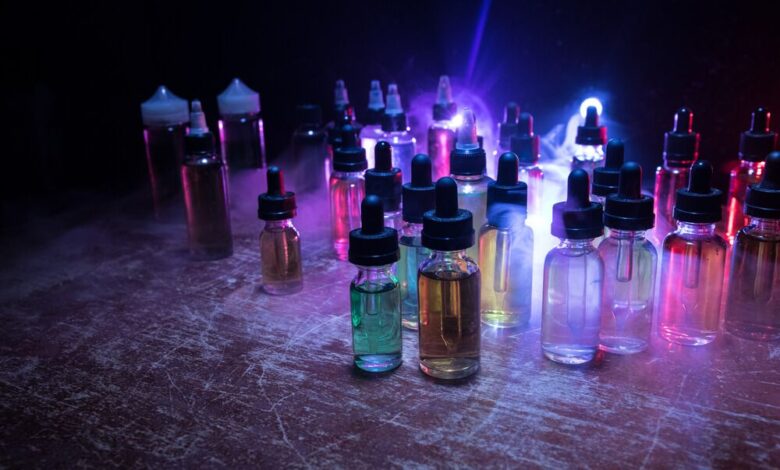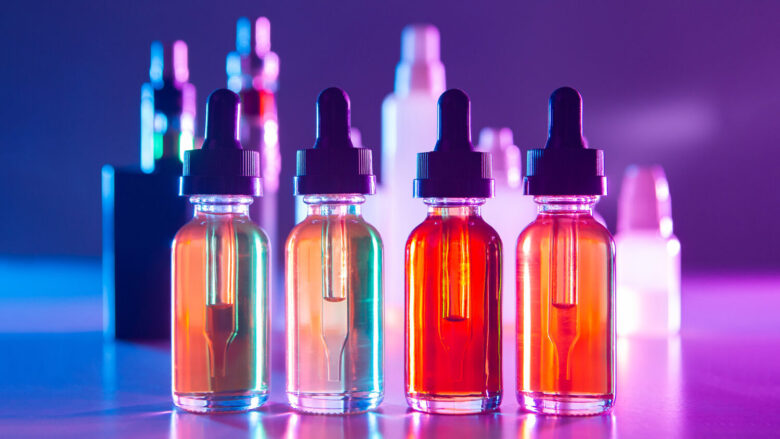
What does PG/VG In Vape Juice Mean?
In recent years, vaping has surged in popularity as an alternative to traditional cigarette smoking, prompting a fascination with the world of e-liquids or vape juices. One key aspect of these liquids that often puzzles newcomers is the mysterious PG/VG ratio mentioned on every bottle. Let’s shed some light on what Propylene Glycol (PG) and Vegetable Glycerin (VG) are and why understanding them can significantly enhance your vaping experience.
Definition of PG and VG
Propylene Glycol (PG) is a colorless, nearly odorless, synthetic organic compound with a faintly sweet taste. It’s utilized in a wide range of industries, from pharmaceuticals to food production, for its solvent and humectant properties. Vegetable Glycerin (VG), on the other hand, is a natural substance extracted from vegetable oils. It’s often used in the food and cosmetic industries due to its viscosity, sweetness, and safe consumption profile.
Characteristics and Properties

Each substance has unique properties that affect the vaping experience. Propylene Glycol, with its thinner consistency, excels as a flavor carrier and gives a stronger “throat hit” – the satisfying sensation smokers seek. Vegetable Glycerin, on the other hand, is much thicker and imparts a smoother feeling when inhaled. The main reason many vapers adore VG is its ability to produce impressive, dense clouds of vapor, making it a must for “cloud chasers.” This is why you’ll find them in every vape shop Toronto has to offer.
PG and VG Ratios in Vape Juice
Vape juices typically feature a blend of these compounds, and the ratio greatly impacts your vaping experience. Higher Propylene Glycol ratios offer sharper flavor and a stronger throat hit, mimicking the experience of traditional smoking. Conversely, Vegetable Glycerin-heavy mixtures produce thicker, voluminous vapor clouds with a smooth hit, making them ideal for direct-to-lung vaping and cloud chasing.
Choosing the Right Ratio for Your Vaping Preferences
Selecting the ideal compound ratio hinges on personal preferences and vaping goals. If you’re transitioning from smoking and crave that throat hit, a higher PG blend might be your best bet. If you’re a cloud enthusiast with a sub-ohm device, a VG-dominant mix will likely be your favorite. Also, bear in mind that not all vape devices work well with high VG due to its thickness, which can clog smaller, low-power devices.
Allergies and Sensitivities
While these two compounds are generally safe for most people, some vapers may experience allergic reactions or sensitivities, with Propylene Glycol more commonly causing issues. Symptoms may include sore throat, sinus problems, or skin irritation. If you suspect a reaction to PG, try switching to a VG-dominant or 100% VG e-liquid. Always consult with a healthcare professional if you have concerns.
DIY E-liquids: Mixing PG and VG

For the DIY enthusiasts, crafting your own vape juice blend allows you to adjust the PG/VG ratio to your liking. While this offers a higher degree of customization, it’s crucial to understand the safety aspects and measurement accuracy. Always use pharmaceutical-grade PG and VG, use precise scales for measurement, and mix in a clean, safe environment. Remember, safety first!
Conclusion
Understanding PG/VG in vape juice is crucial for an optimal vaping experience. Whether you seek intense flavor, throat hit, or massive clouds, your choice of PG/VG ratio can make all the difference. We’d love to hear your thoughts and experiences – share your favorite PG/VG ratios in the comments below, and let’s continue to explore the fascinating world of vaping together!




